- Home
- Michelle Tea
How to Grow Up Page 4
How to Grow Up Read online
Page 4
“I’m going out!” I yelled casually to my mother and went to slip out the front door.
“Come say good-bye to your godmother,” my mother hollered back. Or, Come say good-bye to ya gawdmutha.
I wobbled into the kitchen. I bent down from my new height to give my gawdmutha a kiss. I acted like it was no big whoop that I was dressed like a sluttier version of Jodie Foster in Taxi Driver.
“Oh no,” my mother said. “You’re not goin’ out like that. Someone’s gonna grab you.”
“Virginia, I only bought those for her to play dress-up in,” my godmother defended herself.
I was playing dress-up. I just wanted to play it outside. On the street. Where a cute boy might see me and be dumbstruck by how awesome I looked and fall in love with me so my life could finally start. Even though I looked like a PSA for the exploitation of underage girls, I actually had no idea there was anything inappropriate about my outfit. I just thought I looked really, really cool.
This blind spot would haunt me throughout my life. I always had a difficult time determining what outfits were appropriate for what situations, and this difficulty produced a frustration I could only relieve with rebellion. My petty little life in Chelsea, Massachusetts, was never going to provide me with the opportunity to wear the dramatic, decadent outfits I longed to dress in, and so mundane events would have to do. The occasional no-uniform days my Catholic school offered, for example. To a school-wide Christmas party in sixth grade I wore a striped mini-dress with actual ballet shoes as footwear and a feathered roach clip in my hair. A bean-shaped pleather Jordache cross-body purse cut across me on its ropy strap. The principal phoned my mother and asked her to please deliver a less-totally-awesome outfit for me to change into, and so my pictures on Santa’s lap that year featured me wearing a patchwork sack dress straight out of Little House on the Prairie. And I loved Little House, but word of Valley Girl culture had reached as far as Chelsea, and I was trying to look less prairie, more galleria.
The persecution was just beginning. By seventh grade I was taunted by classmates for my amazing hot-pink-and-black geometric-patterned sweat suit, jeered at for being “punk.” I was baffled—they said “punk” like it was a bad thing! A fight with Mom over what I would wear in my class pictures resulted in a photo of me red-faced, eyes swollen from crying, in a pastel sweater decorated with dancing teddy bears, the black-and-white-checked tunic with the spiked belt and asymmetrical-snap collar in a ball of defeat on my bedroom floor.
My fashion sense nearly prevented me from graduating eighth grade, because I had the audacity to wear a strapless dress to the ceremony. The principal—a nun whose own sweaters were suspiciously tight—called the dress “amoral,” and declared that I did not look like the product of a Catholic upbringing. I wasn’t exactly sure what she was getting at, but I knew I did look like Cyndi Lauper, minus the orange hair (not for long!), and the only thing wrong with that outfit was the shapeless gold robe I had to cover it all up with to walk down the aisle. Sister Gertrude and I had spent the final months of my education in a ridiculous stalemate: Each morning, as the class pledged allegiance to the flag, she waited at the glass pane of the classroom door, glaring at me. As our childish voices chorused, “and justice for all,” she would swing open the door and march me to the bathroom to oversee the scrubbing away of my navy-blue eyeliner. Every morning I arrived at Our Lady of Assumption School with my eyes smudgily ringed in Wet n Wild, and within an hour I was rubbing it off with a scratchy paper towel. I couldn’t give in to Sister Gertrude, and Sister Gertrude couldn’t give in to me. When I graduated, she went as far as to create a new dress code handbook for every future student to ponder, complete with crude drawings illustrating what a “punk” haircut looked like (it looked, frankly, like a mullet).
Starting afresh at my next Catholic school—high school this time, and all-girl at that—I dyed my hair black against my mother’s wishes. She feared it would make me look like my father, whose existence we as a family were trying to forget. It might have brought out that family resemblance if I hadn’t teased it into a sprawling inky mushroom cloud upon my head, with bangs that cascaded into my face, making it hard to see. This fantastic hairdo made my classmates at the all-girl Catholic school furious. I scooted out of class early each day to avoid a pummeling by the beefy Italian girls who were driven to rage at the sight of my tangles. Eventually the principal saw fit to put a stop to this bullying, dealing with it by kicking me out of school so that my classmates’ education would not be ruined by the constant distraction of my hair.
I enrolled in the local public school, where I was shoved in the hallway for wearing, out of season, the Elvira-brand black lipstick sold at drugstores each Halloween. I became an acolyte of the darker operas of punk and Goth. The world recognizes these subcultures now, but in the mid-1980s, adopting the look with the dedication I did—black lipstick, hair teased to the point of total destruction—outside the East Village or Camden Row was enough to get you killed. Okay, beat up. I hid in the bathroom or in empty classrooms during lunchtime, and I didn’t talk about it at home. My mother would never have understood—she thought I looked crazy, too, and seemed to have more sympathy for the people moved to violence by my appearance than she did for me. After all, I could just dress normal and everyone would leave me alone. But I couldn’t dress normal. That was the thing.
Though such violent disapproval of one’s clothing selections could send many people back to the closet in search of something softer, my instinct was to fight back. I knew that there was nothing wrong with wearing, say, a black lace slip as a dress, with a pair of black Doc Martens. That the sight of me in such a getup could inspire a person to shout horrible, unprintable names at me on the street seemed a bit of an overreaction. Capitulating to the bad vibes the world was aiming at me felt like giving in to bullying, and it would have been.
Getting beat up for the way you look as a teenager is going to force you to make some hard and fast decisions about not just your life, but life. It will turn you into a little philosopher, which, by the way, goes very nicely with a high-necked black lace dress and a prim patent-leather purse. Whatever dent to my self-esteem the harassment may have given me, submitting to such meanness seemed far more dangerous. I didn’t just like how I looked—I loved it. No amount of negative reactions could convince me that I didn’t look totally awesome with my hair crawling off my scalp like a blue-black tarantula, that the oversize crucifix intended to be hung on a wall didn’t actually make a fantastic statement necklace. The joy I felt in discovering new looks, in exploring and feeding my burgeoning vanity, outweighed the stress of feeling vulnerable to attack.
I was young, and not so worldly, but somehow I understood that my style triggered not so much a punk hatred as a general xenophobia that included gay people, people of color, and homeless people. Anyone different from my straight, white, mostly male attackers earned their wrath. A larger understanding of oppression began to grow and, hardly knowing a gay person, a homeless person, or a person of color, I aligned myself with them in the world. And in this way my fashion both cast me out of the prevailing culture and signaled to the world my disdain of it. I hadn’t started my fashion career angry at the world, but after years of having soda cans flung at your head, you sort of end up there.
My point, and I do hope I’ve made it, is that I’m a fashion person, down to my bones. As much as I hate when people redeem the needless suffering life has heaped upon them by saying it “made me who I am today,” I suppose I could admit the same about the decade or so I spent weathering the punishment our culture sometimes metes out to the differently dressed. Sure, as a sensitive person with strong empathy, I probably would have been drawn to social justice causes no matter what I looked like, but experiencing repressive violence firsthand at such a formative age gave me a political consciousness that has shaped much of my life. It taught me a rugged compassion, and it gave me a longing to take some
of the fight I have in me and offer it to those who could use some.
There was one dark fashion era, around age twenty-one, when my interest in social justice actually accomplished what so much bullying had failed to do—it broke my fashion spirit. I became obsessed with second-wave radical lesbian feminism and fiercely dedicated to animal rights, which prompted me to shave my head and wear nothing but oversize jeans held to my bony vegan hips with a hemp belt and Tevas on my feet regardless of the season. I got my groove back eventually, but honestly, my political affiliations have remained a constant challenge to my fashion tendencies. It can be hard to care about poverty and economic disparity and also immerse yourself in the fantasy world of fashion magazines, where the garments are often so expensive the price isn’t printed. There is a dissonance in being a believer in a new standard of beauty, one that includes all races and body sizes and genders, while developing strange obsessions for particular models and feeling your heart skip absurdly when you recognize them in an editorial—in being a nonconforming, rebellious sort, yet turning hungrily to an industry that instructs you what to cease wearing and what to wear instead; instruction I actually believe.
But, for all the paradoxical mind-fuckery, there was something powerful in my embrace of fashion, something that felt alluring and confusing, yet correct. And that was beauty. Beauty. During my conflicted fashion moment, beauty seemed more a tool used to whack women around with than anything else. Looking to subvert if not destroy the concept, I’d cultivated a “beauty” in myself that seemed at odds with the current standards—weird where I could be normal, torn where I could be tailored. I’d set out to widen my scope of beauty to include forms mainstream culture ignored or punished. But what I’d done along the way was demonize the rest of it. In this process, beauty had become my enemy. And suddenly I wanted to be its friend. I think it had something to do with getting sober—how thirsty I was for new things to occupy my psyche, or how the spiritual practice that was helping me stay away from alcohol cautioned against buying into the illusion that anything was my enemy. It seemed, after decades of fighting, of reveling in the sharp power of No! that the most radical thing left for me was a gigantic, all-encompassing Yes!
• • •
Let me introduce you to my dear friend Annie. Like me, Annie is in recovery from a bout of radical feminism that temporarily destroyed her amazing aesthetic (think cherry-red or platinum-blond untamed corkscrew curls, Vivienne Westwood Melissa jelly stilettos, and body-con micro-minis). Reared in the same sort of low-income urban decay as I’d been, she, too, struggled to balance her desire for nice things with the knowledge that much of the world doesn’t have food, let alone a pair of Stella McCartney sandals. (Hey, at least they’re vegan!)
Annie has great fashion sense, putting together outfits like a dumpster dress with Dior pumps and a leather jacket she had an artist friend paint the back of. Or a pair of leggings made to look like golden peacock feathers paired with giant clompy ankle boots and an actual—or phony—Balenciaga bag dangling from the crook of her arm. It was with Annie that I bought my first fake designer purse, on Canal Street in New York City, a Louis Vuitton Alma knockoff with multicolored monogram, a big “leather” bow, a gleaming little lock that came with an actual key, and a dust bag. It looked so convincing, so expensive, that people treated me differently when I carried it. Saleswomen in department stores were nice to me, and salesgirls in cool little boutiques snubbed me. I had mixed feelings about passing as wealthy. On the one hand, I had lived through grunge fashion, when every trust fund baby was decked out in a torn flannel and an ironic trucker cap. It seemed only appropriate that I, a poor person, should appropriate posh style. But when the girls working minimum wage at the movie multiplex started whispering about my bag, I couldn’t bear to have them believe I was a richy-rich. As someone long impoverished, I had a strong sense of solidarity with the downtrodden, and I didn’t want this illusion of wealth to come between me and my sisters.
“It’s fake!” I hissed at them with a wink and a smile. Like, You could have one, too! Fake designer fashion is political! It’s the great equalizer! No more class hierarchies, not if my thirty-dollar Louis Faux-ton buys me the same class deference as a two-thousand-dollar “real” one! And who is to say what is “real” anymore? I didn’t go to college, but I have a feeling that some people have written some papers on this subject.
But the Cineplex girls gave me stink-face when they learned my purse was not legit. Why would I brag about such a thing? Ugh! One even snorted at me. “Fake!” Then they all turned and laughed at me. Well, at least I’m not making minimum wage at the mall! I thought, all class solidarity evaporated before you can say reality television.
Annie helped me get closer to fashion in other ways as well. Once, on a road trip, we drove straight across the country, anxious to get the rental car back before we got charged extra. This meant nonstop driving, a brutal and dangerous game in which we sort of lost our minds. We drank Red Bull and chewed caffeinated gum and rolled down the windows so the wind could smack us in the face. And we read fashion magazines.
For miles and miles, I held pages of Vogue or Elle or Harper’s Bazaar open to Annie, who would take her eyes off the road to gaze at the goods on each page. We played What is the ugliest thing on this page, Guess how much that purse costs, and What on this page is the most “me”? Also, desperate to get as much mileage as possible from each magazine on our journey, Who would you have sex with on this page and yes, you absolutely have to pick someone.
By the end of the trip, I was hooked on fashion magazines. I was hooked on them in the way that a person gets hooked on things when repeatedly exposed to them while being deprived of sleep and nutrition. I remedied this new need by getting fake subscriptions to all of them. A fake subscription, by the way, is when you put a fake name and a real address on a subscription card and check “bill me later.” You’ll get a handful of magazines before they cut you off. It’s stealing, basically, a sort of benevolent scam well known to the broke and fashion obsessed (in the eighties, when I was broke and music obsessed, I ran a similar scam with the long-defunct Columbia Record and Tape Club, getting a bunch of Van Halen and AC/DC tapes for a penny). For the scam, I came up with the pen name Angelica Ford—clearly a rich woman who had been raised right in this world, raised with privilege, who had probably modeled before marrying a shipping heir from a country that still had a monarchy.
My magazines came pouring in, regenerating a love I hadn’t indulged since back before the days of radical feminism. In my youth, in high school, and in the early nineties, I had loved high fashion. Madonna had paved the way for me to know Jean Paul Gaultier, and Vivienne Westwood was the perfect bridge between the world of the Sex Pistols and the world of Chanel. I was thrilled to reacquaint myself with both designers, and to learn about a whole bunch more.
My new morning ritual was to read the magazines with a French press of coffee. This was less than a year into my sobriety, and the novelty of mornings had not worn off. Alcoholics don’t get mornings. Waking up without nausea, without a splitting headache, without the shakes, sitting in a kitchen that is actually clean, and cute, and paging through fashion magazines while starting the day—it was marvelous. How I loved starting my day with fantasy, with luxury! Even though I was still relegated to shopping at thrift stores, the education the magazines were giving me had sharpened my eye. I couldn’t afford that black-and-gold Miu Miu cocktail dress, but when I saw the eighties version of it hanging in Thrift Town, I knew it to be a fantastic approximation.
As my magazines began to dry up from lack of payment, I became sad. Then I looked at what my Vogue subscription actually cost. It cost ten dollars. A year! Ten dollars! Well, I would spend ten dollars this week alone on burritos! I realized that I was making decisions with an old brain, having not yet grown into this new brain—a sober brain, a brain that maybe didn’t want to look and act like a giant angry dirtbag for the r
est of her life. A brain that was maybe perhaps hesitantly interested in growing up—whatever that was.
Despite the training wheels tacked onto its lobes, my new brain recognized that even I could afford a ten-dollar annual magazine subscription. And so when the next you-better-pay-or-we’re-shutting-you-off-we-mean-it-this-time envelope came, I stuffed a check for ten dollars inside it. And I crossed out the name ANGELICA FORD and replaced it with MICHELLE TEA.
• • •
Between my cheap rent and the grand trine of a book advance, a literary grant, and a high-paying job at a fancy women’s college, I suddenly had enough money to buy something big. Something expensive. Something I wouldn’t want anyone around me to know I could afford, lest they all turn against me in hate and envy. It had been a long time since I’d slunk down a city street to cop drugs—skittish about being seen, slightly guilty about what I was doing, yet also experiencing a deep, dark thrill—but walking up to the possibility of spending a bunch of money on a luxury item felt very familiar.
The object I’d been lusting after was a leather hoodie, one I’d first seen in the pages of Elle, and then in Nylon. Just the word combo—leather hoodie—was enough to get me a little high. Since getting sober, I’d found the most interesting things could get my body, desperate for intoxication, a bit high: spectator pumps, Mark Rothko paintings, the color orange, driving under overpasses, and the phrase “leather hoodie.” It was leather—how luxurious, how glamorous! It was a hoodie—how tough, how street! It seemed a nice way to slide into the realm of higher fashion—something already common to me, but insanely elevated.
In order to see the leather hoodie, I had to go to Barneys. I’d never been in Barneys before. I assumed there was probably an electric sensor around the door that went off whenever a current or former dirtbag came through it (nope, only if you’re black!). I’d been enjoying a better reception from the world since living in San Francisco—a more open-minded landscape than chilly New England—but if there was a place in the Bay Area where one could be judged for how poorly one was dressed, it seemed like it would be Barneys.

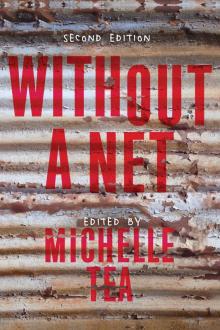 Without a Net
Without a Net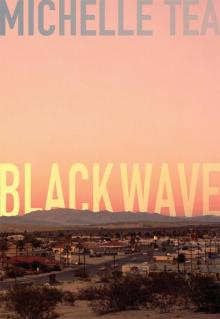 Black Wave
Black Wave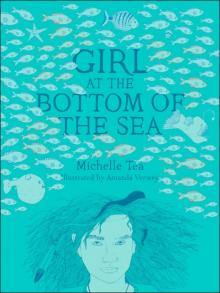 Girl at the Bottom of the Sea
Girl at the Bottom of the Sea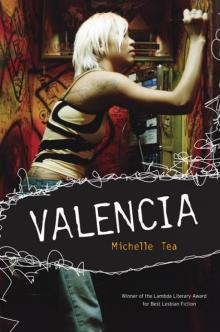 Valencia
Valencia How to Grow Up
How to Grow Up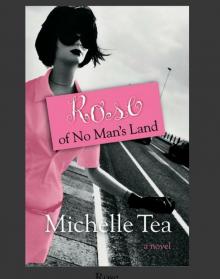 Rose of No Man's Land
Rose of No Man's Land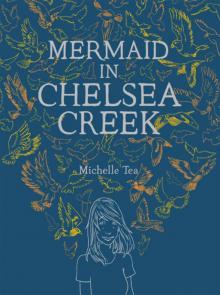 Mermaid in Chelsea Creek
Mermaid in Chelsea Creek